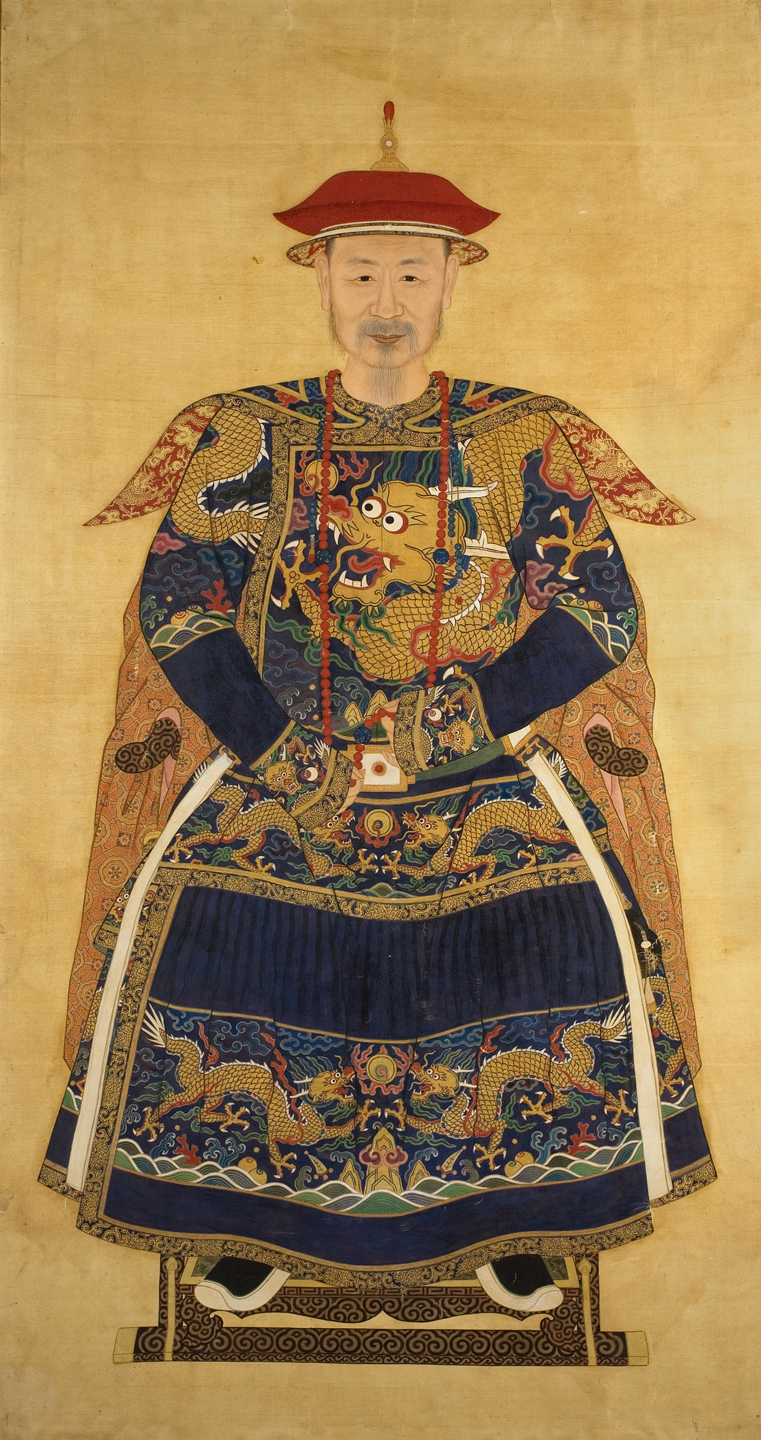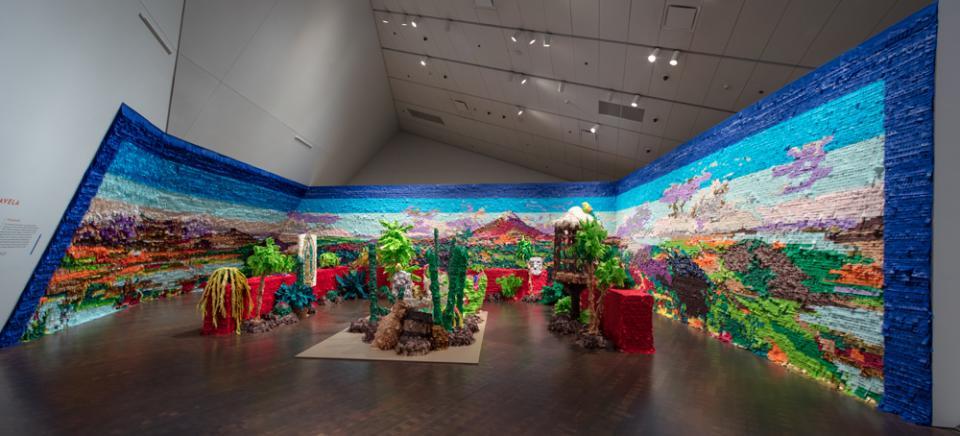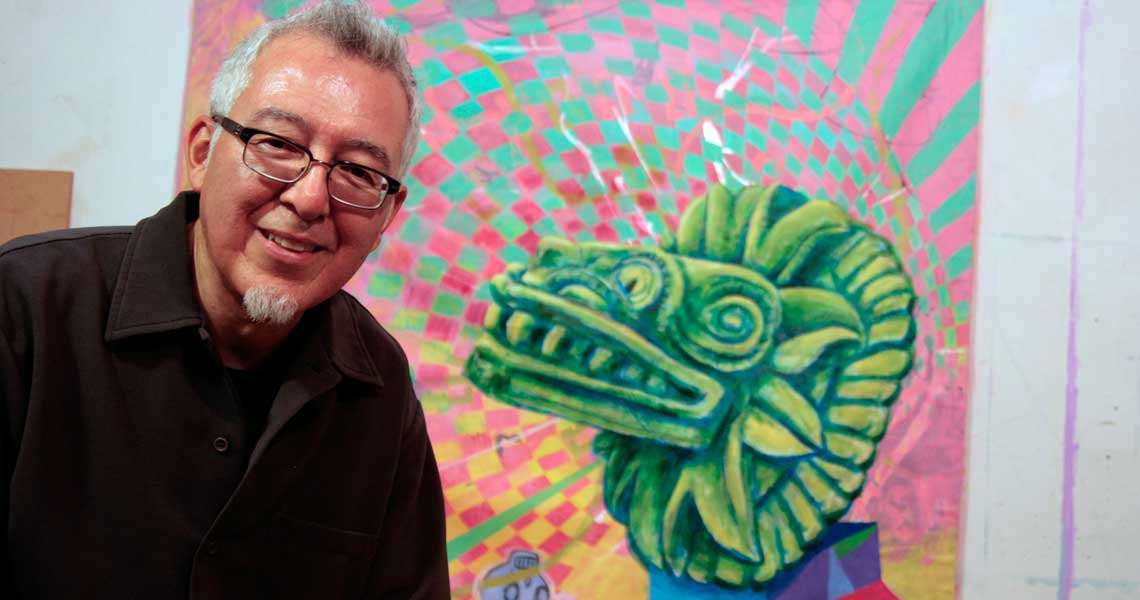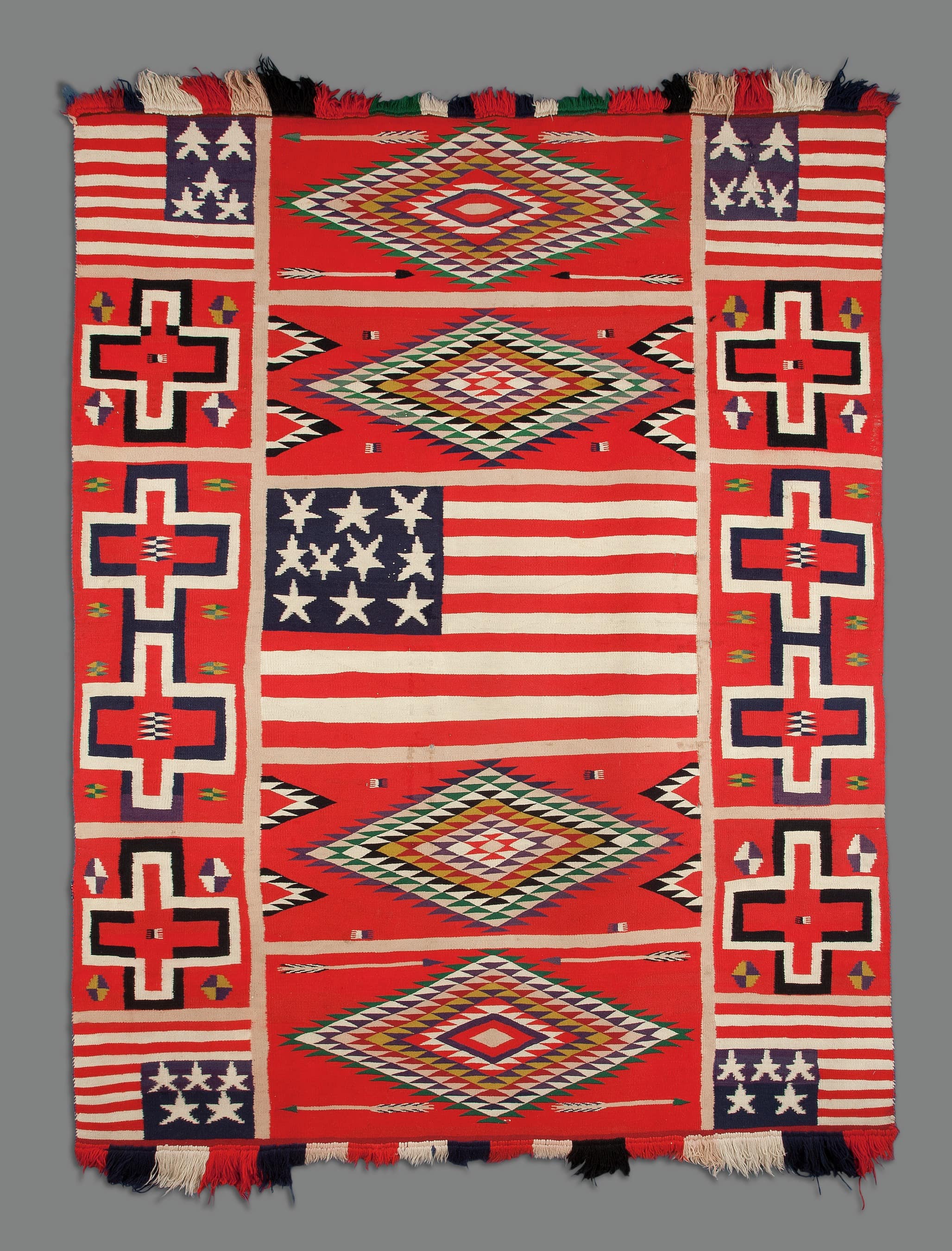Students will use the Yoruba Door Panels to inspire their own “door panel” that reflects elements important in their own lives.
Students will be able to:
- list three things that they do every morning at home;
- list two things they do everyday in the classroom; and
- use three-dimensional objects, repeated patterns, and symmetry to help create a door panel with their classmates.
Lesson
- Have the door or butcher paper prepped prior to class.
- Lead a discussion about students’ morning routines. Ask students what they do every morning (e.g. get dressed, eat breakfast, brush teeth, etc.). Encourage all students to share, as they are comfortable, and record their answers on a board or flipchart. Mention that there are some similarities but not everyone has the same routine––that is what makes us all different!
- Lead another discussion about daily routines in the classroom. Say that these are things we do together as a class (e.g. take attendance, sing songs, clean up, etc.). Record these routines on the board or flipchart.
- Display or pass out the pictures of the Yoruba Door Panels. Facilitate a discussion of what they see. Try going on an “observation hunt” by asking students to point out specific things on the door (e.g. horses, snakes, bows, etc.). Have them count the people and the animals and define the concept of repetition. Use the About the Art section to guide you during the discussion.
- Tell the students that the object is a door from Africa. Share that you are going to create your own classroom door panels based on the classroom routines recorded on the flipchart.
- Bring out the sets of six objects and go through the list to find objects that illustrate each routine.
- Work with the students to tape the objects in repeated patterns to simulate the Yoruba Door Panels.
- Have students touch the different objects as they craft their door, getting a sense of texture, dimension, and shape. After the door is finished, talk about what is different between their door and the Yoruba Door Panels (i.e. how the panels are carved).
- Try to keep the door on display to share with their parents at pick-up and to revisit the next day to reinforce their ideas.
Materials
- Assorted objects that represent parts of your daily classroom routine for which you have at least six of the same items (e.g. six flags, six crayons, six musical instruments)
- One door to decorate with the objects, or a 8 foot x 3 foot sheet of butcher paper laid on the ground (in an area where it won’t be disturbed for a day or two)
- Duct tape or other adhesive to affix the objects to a vertical door (you may tape butcher paper over the door firmly if the tape would affect your finish)
- About the Art section on Master of Ikere’s Yoruba Door Panels
- One color photocopy of the panels for every four students, or the ability to project the image onto a wall or screen
Standards
- Visual Arts
- Invent and Discover to Create
- Observe and Learn to Comprehend
- Relate and Connect to Transfer
- Language Arts
- Oral Expression and Listening
- Collaboration
- Critical Thinking & Reasoning
- Information Literacy
- Invention
- Self-Direction
Door Panel
- Master of Ikerre
- Active Dates: 1900-1914
This door has been attributed to “The Master of Ikerre.” Though there are questions surrounding who exactly this was, we know that the artist was a Yoruba carver active in the early 20th century. The Yoruba people live in Nigeria and the Republic of Benin in Africa. Their artistic tradition is one of the oldest in Africa. It emphasizes the individual artist, allowing artists and craftsmen to use their own unique style while drawing upon conventions from the past. Sculpture is a particularly popular art form in the Yoruba culture.
The Yoruba used doors like this one on important buildings such as shrines, royal buildings, or storehouses for valuable goods. While the doors were not meant to invoke a narrative, images carved into the surface can suggest historical moments. Doors were also made to enhance the prestige and status of a shrine dedicated to a Yoruba god, or orisha. There is some speculation that the images on this door reference Yoruba civil wars that raged between the 17th and 19th centuries. Another possibility suggests that the door might have been carved to adorn a temple or shrine dedicated to Olokun, the Yoruba orisha of the sea. No one is exactly sure where, or for whom the door was originally mounted.
Details
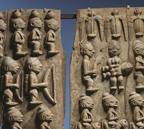
Two Pieces
The two pieces you see here once formed a single door panel. The DAM acquired one half of the panel in 1973. In the summer of 1979, a visitor to the museum noticed the panel and mentioned that he owned a piece that was similar. Through further correspondence it was established that his piece was the missing half. The museum was fortunate enough to acquire the second half of the door in 1980.
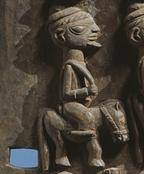
High Relief
The door is carved in high relief, meaning that the images of human and animal figures project out from the solid surface of the wood.
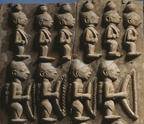
Repetition
The images on the door are divided into groups, forming horizontal bands. In each band, the artist used the same figure over and over, rather than carving figures that are distinct from one another.
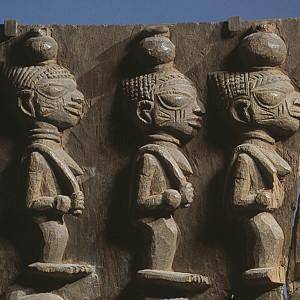
Women Carrying Pots
(top row, left side) Women are the potters in Yoruba society. They make many different types of pottery for practical use, including pots for cooking, eating, and storage. Unique pots are made in honor of Yoruba deities. These women could be carrying the ritual mud pots associated with Olokun.
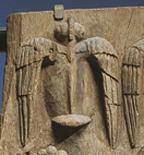
Fish Eagles
(top row, right side) These four birds have been described as a type of raptor—a fish eagle. Priests and priestesses carry fish eagle feathers in ceremonies of worship to Olokun.
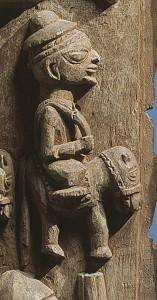
Soldiers
(both sides) The soldier imagery—including soldiers with bows and arrows, men on horseback, and men with guns—might reference the wars of the 17th and 19th centuries.

Women with Babies
(second row, right side) These figures symbolize fertility.
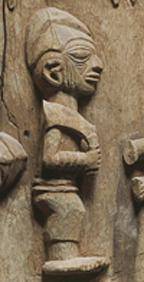
Men with Ceremonial Sword & Flywhisk
(next to women with babies) These items embody authority associated with Olokun, the king of the sea.
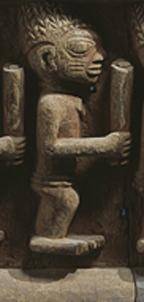
Female Musicians with Rhythm Pounders
(bottom row, left side) Drummers play throughout ceremonies to Olokun, accompanying praise songs.

Mudfish
(bottom-most snake-like figures, right side) The mudfish is known as Olokun’s “playmate,” and is considered the best sacrifice to Olokun.

Pythons
(bottom, left side) The python is also a “playmate” of Olokun. He conveys messages from Olokun to his followers, and reminds followers to make sacrifices to Olokun.

Twin Monkeys
(bottom, right side, facing opposite directions) Monkeys are associated with the Yoruba "cult of twins." Here, they may reinforce Olokun’s connection with fertility and childbirth.
Funding for object education resources provided by a grant from the Morgridge Family Foundation. Additional funding provided by the William Randolph Hearst Endowment for Education Programs, and Xcel Energy Foundation. We thank our colleagues at the University of Denver Morgridge College of Education.
The images on this page are intended for classroom use only and may not be reproduced for other reasons without the permission of the Denver Art Museum. This object may not currently be on display at the museum.

